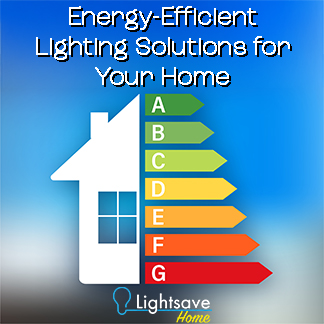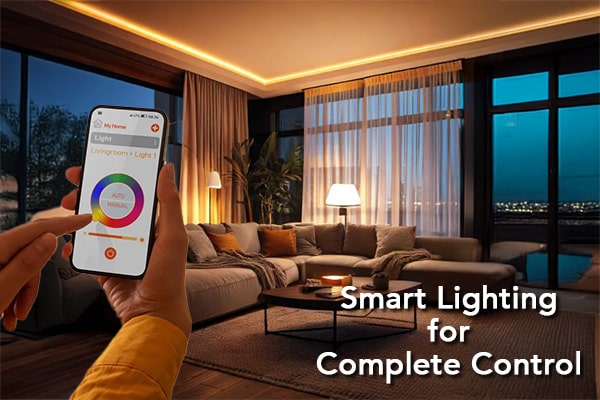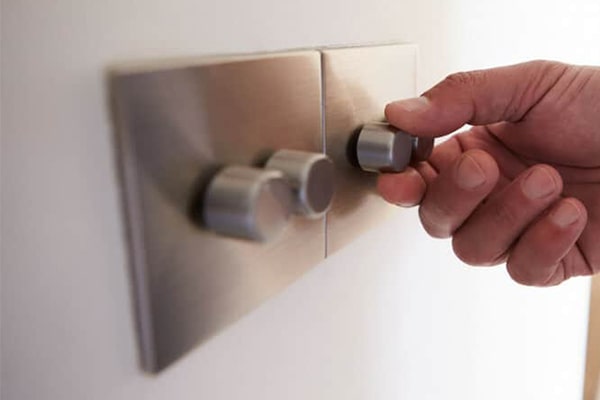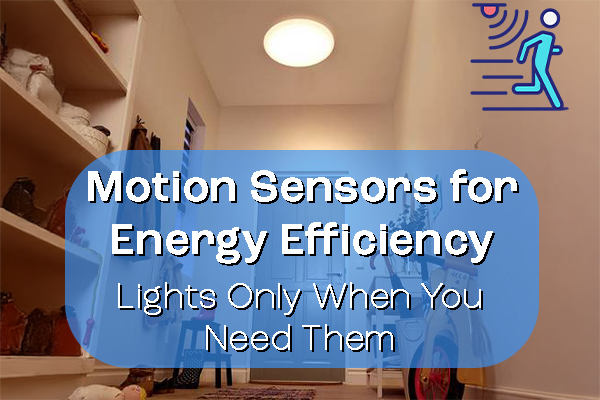Top 10 Energy-Saving Lighting Tips for Your Home

Chapters
- Introduction
- Switch to LED Lighting
- Use Smart Lighting Systems
- Install Dimmer Switches
- Choose A-rated (Ultra-Efficient) Light Bulbs
- Take Advantage of Solar Lighting
- Use PIR and Microwave Sensors
- Explore Corridor Function Fittings
- Use Natural Light Whenever Possible
- Opt for Warm White LED Lighting
- Use Timers and Schedules to Control Lighting
- LED Lighting: Small Changes, Big Savings
- Conclusion

Energy-Efficient Lighting Solutions for Your Home
With energy bills on the rise once again, many households are looking for practical ways to cut down on their electricity consumption. The good news is you don’t have to make drastic lifestyle changes to see significant savings. Simply adjusting your home’s lighting setup can make a big difference. Lighting accounts for a large portion of a home’s electricity usage, but by switching to more efficient options and using smarter technology, you can lower both your energy use and your monthly bills.
At Lightsave Home, we offer a wide range of energy-saving lighting solutions to help you brighten your space while keeping costs low. From LED bulbs to smart lighting systems, there are many easy changes you can make today. Below, we share ten simple steps that can reduce your energy consumption—without compromising on comfort or style.
Use our Free Energy-Saving Calculator to find out how much you could save by switching to LED lighting!
1. Switch to LED Lighting
What is the most energy-efficient lighting option?
LED (Light Emitting Diode) technology is the most energy-efficient lighting available today. LEDs use 85% less energy than incandescent bulbs and last up to 25 times longer. They come in a variety of styles, from classic bulbs to spotlights, and are available in both warm and cool tones.
Practical Tip:
Replace all frequently used lights—like kitchen, bathroom, and hallway fixtures—with LED Lighting to see the quickest savings.
Don’t forget to swap out old halogen spotlights too, as LEDs work perfectly in these fittings.
Explore: Use our energy-saving calculator to see exactly how much switching to LEDs could save you annually.

2. Use Smart Lighting Systems
What is the best light to save energy?
Smart lighting systems help cut down on energy usage by giving you more control over your lights. With apps and voice assistants, you can manage your lighting remotely, set schedules, or sync lights with sunrise and sunset. Advanced smart systems like Ledvance Smart also allow you to dim lights and change colours, so you only use the brightness you need.
Practical Tip:
Use smart routines to ensure lights turn off when everyone leaves the house.
Program outdoor lights to switch off automatically during daylight hours.
Browse: Check out our smart lighting range to get started with energy-saving automation.
3. Install Dimmer Switches
Dimmer switches allow you to reduce light output when full brightness isn’t necessary, saving energy in the process. By dimming lights by just 25%, you can reduce energy usage by around 20%. Dimmers are ideal for dining rooms, bedrooms, and living spaces where you need softer, ambient light.
Practical Tip:
- Pair dimmer switches with LED-compatible bulbs for the best energy-saving results.
- Use dimmers in rooms with multiple lighting zones, such as kitchens with both task and ambient lighting.
- Find LED-compatible dimmers at Lightsave Home to create a comfortable atmosphere while saving energy.
Pro Tip: Discover our Electrical catalogue, where you'll find light switches and electric sockets crafted with the same luxurious finish as our dimmer switches. Elevate your space by seamlessly integrating all three elements to achieve the perfect ambiance and style for any room.

4. Choose A-Rated (Ultra-Efficient) Bulbs
A-rated bulbs (also known as ultra-efficient bulbs) are the latest in energy-efficient technology. These bulbs deliver the same amount of light as traditional ones but consume far less power. Ideal for high-usage areas like hallways and kitchens, these bulbs meet stringent energy standards to reduce running costs.
Practical Tip:
Look for A-rated bulbs for fixtures that stay on for long periods, such as home offices or stairwells.
Replace decorative lighting (like chandeliers) with energy-efficient LED bulbs to further cut down on energy use.
5. Take Advantage of Solar Lighting
Solar lighting uses energy from the sun to charge batteries during the day, providing free lighting at night. It’s perfect for outdoor areas like gardens, patios, and pathways. Solar lights are easy to install and can provide reliable illumination even during winter months, thanks to advances in battery technology.
Practical Tip:
Choose solar-powered motion sensor lights for added security without increasing energy bills.
Use solar stake lights along garden paths to enhance both safety and aesthetics.
Browse: Discover our solar lighting collection for sustainable outdoor solutions.
6. Explore Corridor Function Fittings
Corridor function fittings provide a clever way to save energy by dimming lights automatically when spaces are unoccupied. Ideal for hallways, staircases, and landings, these fittings maintain a low brightness level when no movement is detected and brighten up when someone passes through.
Practical Tip:
Install Corridor Function LED Bulkheads on frequently used paths to ensure safe lighting without wasting energy. Thanks to advancements in LED technology, corridor function bulkheads are no longer just for commercial properties—these fittings have evolved to be more aesthetically pleasing, making them a stylish and energy-efficient choice for modern homes
7. Use Natural Light Whenever Possible
Natural daylight is free, so make the most of it whenever possible! Arrange furniture to maximise sunlight, open blinds during the day, and use mirrors to reflect light into darker areas. Reducing the use of artificial lighting during the day can significantly cut your electricity bills.
Practical Tip:
Use daylight-sensing smart bulbs to adjust automatically based on the available natural light.
Consider installing skylights in darker areas like hallways or bathrooms for extra natural light.

8. Use PIR and Microwave Sensors
Is it cheaper to leave LED lights on or turn them off?
It’s always cheaper to turn off lights when not in use—even LEDs! However, to avoid worrying about manually switching lights on and off, consider installing PIR (Passive Infrared) sensors. These sensors detect movement and automatically switch lights on, ensuring lights are only on when needed.
Practical Tip:
Use motion sensors for bathrooms, hallways, or outdoor spaces where lights are only needed temporarily.
Set PIR sensors to lower the light intensity at certain times of the night for further energy savings.
Install: Check out our PIR and motion sensor products for easy, energy-efficient solutions.
9. Opt for Warm White LED Lighting
Warm white LEDs are perfect for creating a cosy and relaxing atmosphere. These bulbs offer the same inviting glow as traditional incandescent bulbs but with a fraction of the energy consumption. When choosing bulbs, look for a high CRI (Colour Rendering Index), which ensures colours appear natural and vibrant, just like in daylight.
Practical Tip:
Use warm white LEDs in living rooms and bedrooms for soft, relaxing light.
Switch to high-CRI bulbs in areas where colour accuracy matters, such as kitchens or makeup areas.
10. Use Timers and Schedules to Control Lighting
Smart plugs and timers let you automate your lighting, ensuring lights aren’t left on accidentally. This is especially useful for outdoor lighting, holiday decorations, or hard-to-reach fixtures. By scheduling lights to turn off automatically, you avoid unnecessary energy consumption.
Practical Tip:
Use timers to turn off children's nightlights after they fall asleep.
Set outdoor lights to run on a timer, switching off at dawn to save energy.
Explore: Pair smart timers with Lightsave Home’s LED products to create a seamless energy-saving system.
LED Lighting: Small Changes, Big Savings
Making a few changes to your home’s lighting setup can significantly reduce energy consumption. Whether it’s upgrading to LED lighting, installing PIR sensors, or embracing solar-powered solutions, there are many ways to light your home efficiently without sacrificing style.
Use our Energy-Saving Calculator to discover how much you could save by switching to energy-efficient lighting. Visit Lightsave to explore our full range of LED lights, smart systems, dimmers, and more to make your home eco-friendly and more cost-effective.
Final Thoughts: We're Here to Help Every Step of the Way
At Lightsave Home, we understand that choosing the right lighting can feel overwhelming with so many options available. That’s why we pride ourselves on providing excellent customer service—not just during your purchase, but before and after as well. Our knowledgeable staff are always happy to answer any questions you have, whether it’s about selecting the perfect LED lights, understanding smart systems, or calculating energy savings. We're here to help you make the best decisions for your home and ensure your experience with us is smooth and hassle-free.
Feel free to reach out to us—we’re always ready to assist!
Ready to Start Saving on Your Energy Bills?
Discover energy-efficient lighting at Lightsave Home. From LED bulbs to smart systems, we help you cut energy costs while keeping style and comfort.
Upgrade your home today with our expert guidance.
Credit to Carisbrook Digital for researching and crafting this blog
